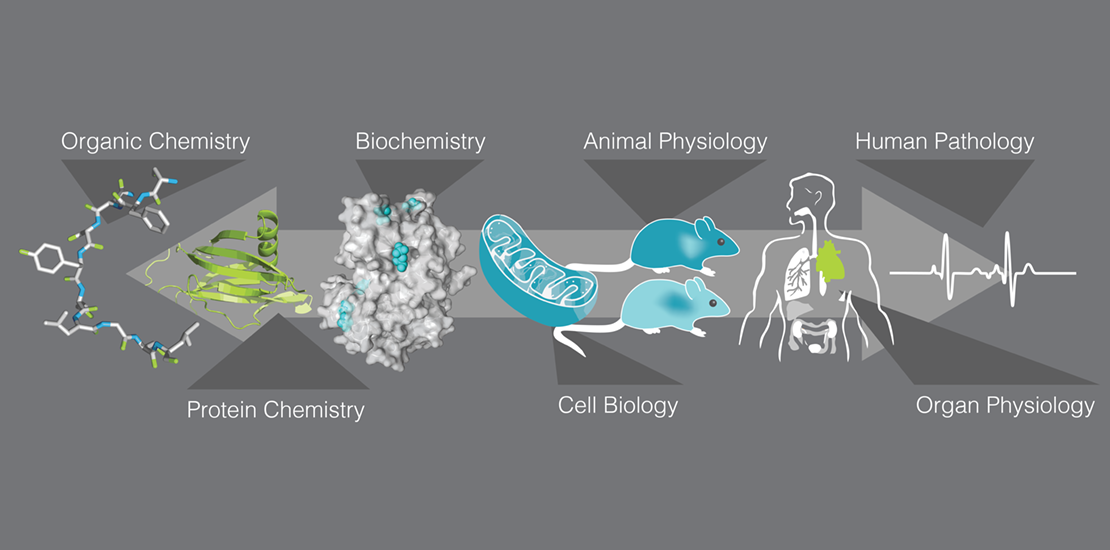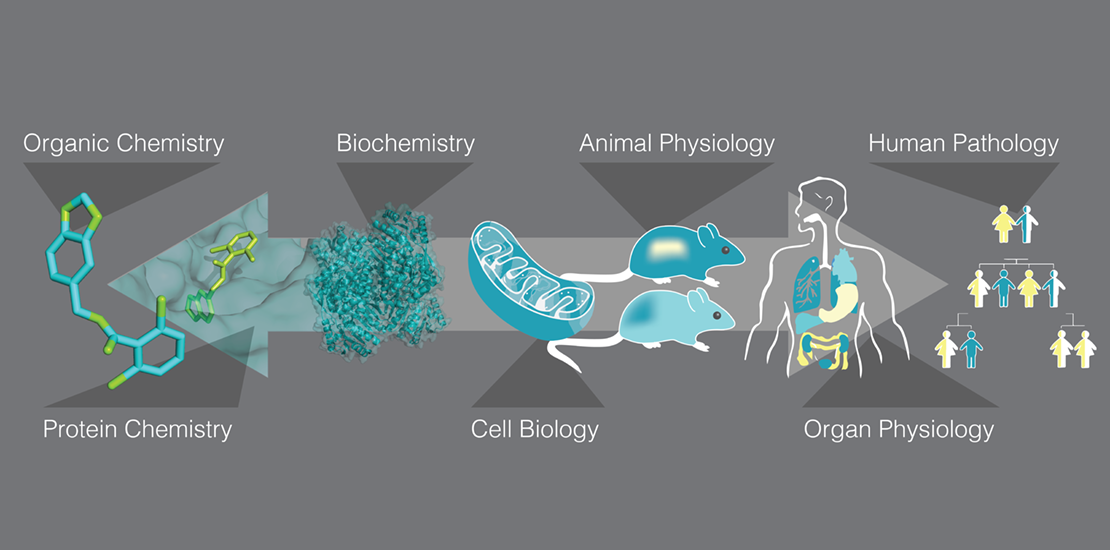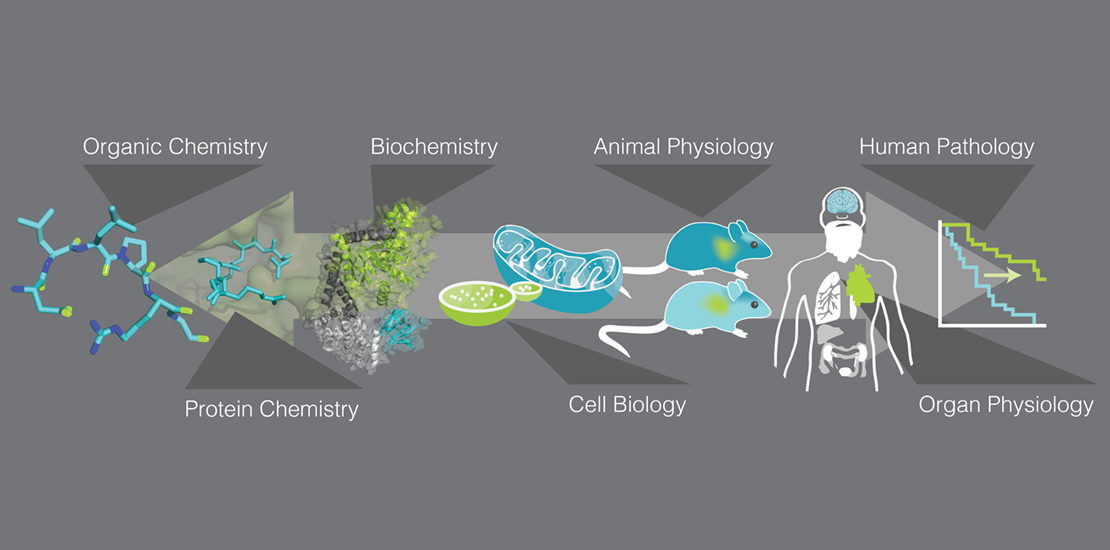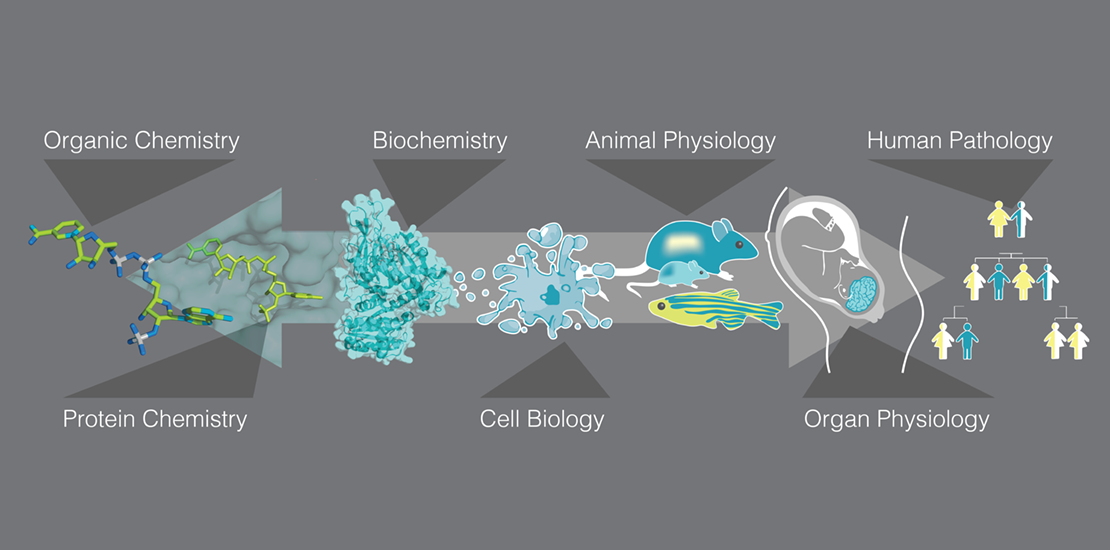Research
PKC

The PKC family of enzymes represents a diverse set of proteins with varying functions from the regulation of cellular proliferation, apoptosis, and necrosis. Work on this enzyme family was the first contribution of our lab to the field. Our lab generated isozyme specific modulators that allowed research to begin to separate the different functions of each isozyme. This work has led to the discovery of the opposing effects of PKCδ and PKCε in the mitochondria in the context of ischemic heart disease (heart attack).
But each PKC isozyme phosphorylates many protein substrates. To determine the role of each phosphorylation events, we rationally designed peptide inhibitors of protein-protein interactions that inhibit one the phosphorylation of one substrate at a time. These inhibitors demonstrated that concomitant phosphorylation events that are mediated by the same protein kinase can lead to the same or opposing effects. These subtleties in signal transduction regulation provide a new insight on the orchestration of signal transduction in normal and disease states.
For more details, see publication.
ALDH

The ALDH family of enzymes plays an important role in detoxifying aldehydes. Exposure to toxic aldehydes can come from cigarette smoking, drinking alcohol, exposure to formaldehyde, as well as from endogenous processes such as lipid peroxidation and amino acid metabolism. The ALDH enzyme family is made up of 19 isozymes in humans, each with specific substrates that they metabolize.
Many of the isozymes have been associated with human disease, and known mutations found in the human population have been shown to cause decreased catalytic function lead to the accumulation of toxic aldehydes. Our lab has been working to develop small molecule modulators of ALDH activity that are isozyme specific. These modulators will enable researchers to distinguish the function of these different ALDH isozymes, and may be useful in treating human diseases caused by mutations in ALDH enzymes; the most common mutation is found in ALDH2 in East Asians, that causes facial flushing when drinking alcohol. This mutation was thought to be benign. However, our ALDH activators have been found to improve outcomes in a variety of models of human diseases, including myocardial infarction, inflammatory pain, radiation dermatitis, salivary gland stem cell protection, stroke, Parkinson’s disease, Fanconi Anemia and others. The role of ALDH in these diseases are now supported also by epidemiological studies.
In a recent study, we used a novel pharmacological agent that ‘hijacks’ a member of the ALDH family, ALDH3A1, to replace the mutant ALDH2 in metabolism of the toxic acetaldehyde in vivo.
For more details, see publication.
Mitochondrial Dynamics

The mitochondria plays important roles in maintain the energy balance of the cell and mediating responses to stress. Part of the regulation of these functions is mediated by mitochondrial fission and fusion. The Drp1 and Fis1 proteins are key modulators of these processes, and bind to promote fission. Our lab has identified a peptide that selectively inhibits Drp1 in the mitochondria. We have shown that this can reduce excessive mitochondrial fission in the context of cardiac disease and Huntington’s disease, leading to improved outcomes. Additional peptide inhibitors of protein-protein interactions that regulate mitochondrial dynamics are the subject of current efforts, including regulators of mitofusin 2 [see reference] and Mfn1, Opa1 and Drp1 interaction with other mitochondrial adaptors.
G6PD

Glucose-6-phosphate dehydrogenase (G6PD) is a key enzyme in the pentose phosphate pathway that generates NADPH and reduced glutathione (GSH). G6PD is essential in maintaining the redox equilibrium to handle oxidative stress, especially in erythrocytes.
Over 400 million people worldwide have G6PD deficiency resulting from single amino acid variants in G6PD. There are over 160 known variants, which give symptoms ranging from chronic non-spherocytic hemolytic anemia (Class I) to almost no clinical manifestation (Class IV). These variants can affect the catalytic activity, stability, and/or oligomeric state of G6PD (normally a dimer of dimers). In addition to NADP+ in the catalytic site, G6PD also binds a second NADP+ near the dimer interface. Once the G6P substrate is bound, this structural NADP+ may migrate to the catalytic site. The structural NADP+ is essential for enzyme function, and many Class I mutations are found near the structural NADP+ site.
Our lab recently conducted a high-throughput screen to identify small molecules that correct G6PD mutations by increasing the catalytic activity and/or stability of the mutant enzyme. We are now characterizing and evaluating these molecules in numerous ways as a first step to develop treatment for G6PD deficiency. This project involves medicinal chemistry on the candidate molecules, and characterizing the stability and activity of G6PD in vitro, in cell culture, and in vivo models. Another area of research in our lab aims to elucidate the biochemical properties that determine the clinical affects of G6PD variants using biochemical and computational techniques.
For more details, see publication.